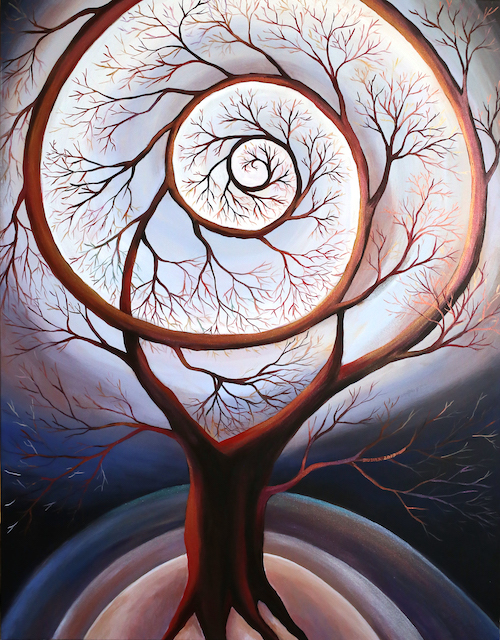Carney commissions 3 brain-inspired artworks

The Robert J. and Nancy D. Carney Institute for Brain Science moved in January into a state-of-the-art facility at the center of Brown University’s College Hill campus. Capitalizing on its new innovation hub and the University’s Open Curriculum, the Institute commissioned three brain-inspired works of art from Brown students. The goal was to bridge the arts and sciences, and to give students of various academic disciplines the freedom to explore brain science through art.
Here, we introduce you to the student artists and provide a sneak peek of their work, which is now on display on the fourth floor of 164 Angell Street. Join us for a reception on Friday, September 20, from 3 to 5 p.m., where you will have the opportunity to view the artworks and meet the student artists
Elaina Atherton
Ph.D. student in Biotechnology

Q. Tell us about your artwork.
A. “Interfacing” is an eight-panel vinyl wall decal that explores the surreal intersection of machines and the human nervous system. “Interfacing” shows the transition of a body in motion into an electrical neural signal trace and then a circuit board trace. The visual overlap of the axon-like hair, electrical traces, and circuit board traces touches on the common principles of physics of which the biological and the engineered both rely.
Q. If you had to describe your artwork in one word, what would it be and why?
A. Interfacing. The piece is about the interfaces between nervous system and machines, and more broadly the integration of neuroscience and engineering.
Q. What inspired the creation of your piece?
A. In my Ph.D., I study brain-machine interfaces. I spend a lot of time thinking about what the ideal brain-machine interface might look like, and the many interdisciplinary approaches required to create it.

Ciprian Buzila
Ph.D. student in History of Art and Architecture
Q. Tell us about your artwork.
A. I used the metaphor of the tree of life and envisioned the human brain as a spiral cosmic tree, suggesting that it evolves and changes continuously in a mysterious fashion. I used acrylic colors on 36 by 48-inch canvas.
Q. If you had to describe your painting in one word, what would it be and why?
A. Evolution, because I believe the human brain will continue to unveil its potential throughout time.
Q. What inspired the creation of your piece?
A. The representations of the tree of life in the history of art have always intrigued me. They illustrate the foundation of the universe and that which connects all of life together in peace and harmony.
Annie Ge '22
History of Art and Architecture, Economics

Q. Tell us about your artwork.
A. I created an installation made of acrylic on parallel layers of perspex, which shows a three-dimensional structure of the brain. Each layer refers to one cross-section from an MRI scan of the brain. However, a range of colors is used to differentiate from the conventional black and white scans.
Viewers can interact with the installation by adjusting their body positions to explore the differences created by perspectives. The medium of the work is aimed to reveal the complexity of our brain through a more engaging and artistic way that we rarely see in science classes. Presenting a more visualized art form, the discovery of brain science and ourselves can be more accessible to all.
Q. If you had to describe your artwork in one word, what would it be and why?
A. Self, because the brain makes us who we are.
Q. What inspired the creation of your piece?
A. I was inspired by the layer drawings created by Japanese artist Nobuhiro Nakanishi, who uses perspex as the primary medium.



